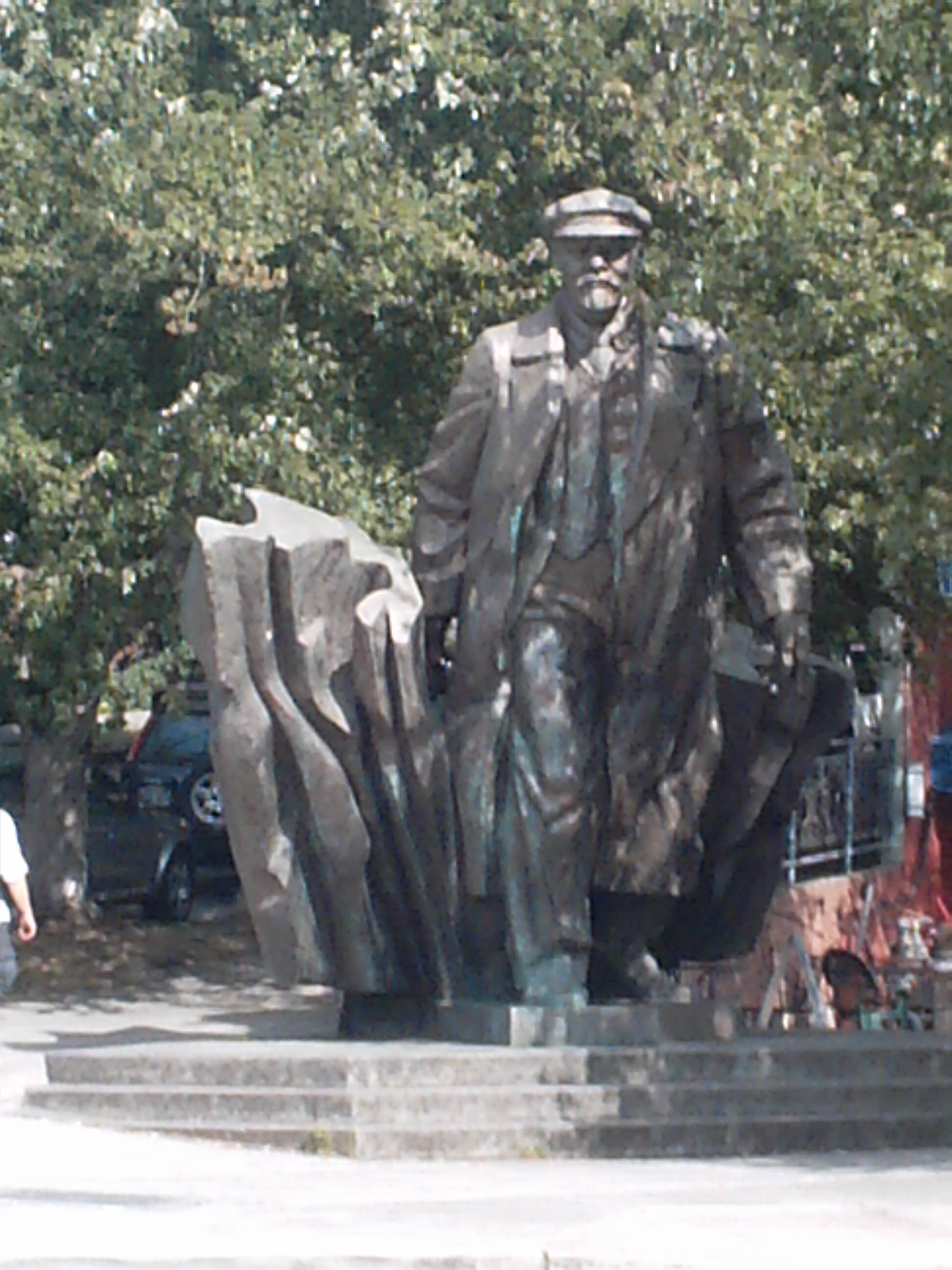Aside from being America's largest
statue of Vladimir Illych Lenin – so there, largest ball of twine! (Lenin Statue) – this has to be one of the
last Soviet-sponsored statues of Lenin, and perhaps that explains its major difference. It was originally installed
in Poprad, Slovakia, in 1988, one year before the Velvet Revolution toppled communism, and the statue, in Czechoslovakia.
Shortly thereafter, it was purchased by American Lewis E. Carpenter because of its artistic quality, and eventually found
its way to Seattle. Before Carpenter could really figure out what to do with this seven ton piece of art, he was killed
in an automobile accident. (Val) So now, even though the statue has taken its place among Fremont’s other
quirky art, it is still technically for sale. As of 2006, the asking price was $250,000. (Statue of Lenin, Seattle)
Of course, following the collapse of the world economy in 2008, you could probably get quite a bargain.

The statue, which took Slovak Bulgarian Emil Vonkov ten years to create, was commissioned by both the Soviet
and Czech governments (not that there was much difference in those days). (’Lenin’ by Emil Vonkov)
What makes this statue unique is that it is perhaps the only statue of Lenin where he is not represented holding a book or
waving his hat – you know, a nice guy. Instead he is surrounded by stylized guns and flames. He is represented
as the cruel, violent man that he really was. (Story of the Statue of Lenin)
There is very little doubt that Vonkov wanted to portray Lenin as not the type of guy you’d want living next
door. What is puzzling is how he got away with it. After all, Vonkov was living in a totalitarian society that
didn’t have to apologize if you were taken out back and shot. One is tempted to blame the deterioration of the
Soviet Union. However, perestroika didn’t begin until 1986, (Revelations) and the statue was begun in 1978, when
communism was still going strong. It’s also possible that the authorities never checked the design, or that Vonkov
changed it, but neither of those are likely. Since the statue was being commissioned by the authorities, they would’ve
most certainly demanded to know the outcome before it was begun, and they also would’ve routinely checked up on it.
Bureaucracy at its best. What seems most likely is that they missed it. Perhaps risking his life, Vonkov presented
a design that wasn’t flattering in the least, and they bought it. “So, Comrade... what do those... ‘things’
represent?” “Wheat, comrade! Glorious wheat! Soviet wheat. The best wheat in the world!”
And who knows, maybe they really did.
Work Cited
“’Lenin’
by Emil Vonkov.” 2012. Flickr. 11 Aug. 2012. http://www.flickr.com/photos/site4soreiz/5215505242/
“Lenin Statue.” 2012. RoadsideAmerica.com.
10 Aug. 2012. http://www.roadsideamerica.com/story/9056
“Revelations from Russian Archives:
Perestroika.” 22 July 2010. Library of Congress. 11 Aug. 2012. http://www.loc.gov/exhibits/archives/pere.html
“Statue of Lenin, Seattle.”
23 July 2012. Wikipedia. 10 Aug. 2012. http://en.wikipedia.org/wiki/Statue_of_Lenin,_Seattle
“Story of the Statue of Lenin.” Fremont,
Seattle: Center of the Universe. 10 Aug. 2012. http://fremont.com/about/statuelenin-html/
Val. “Statue of Lenin in Fremont.”
9 Mar. 2010. Silly America. 09 Aug. 2012. http://www.sillyamerica.com/blog/2010/03/statue-of-lenin-in-fremont/